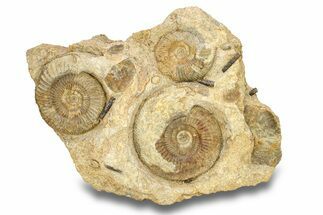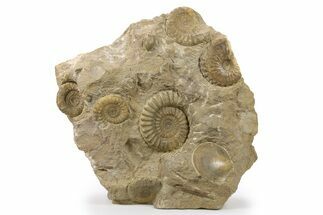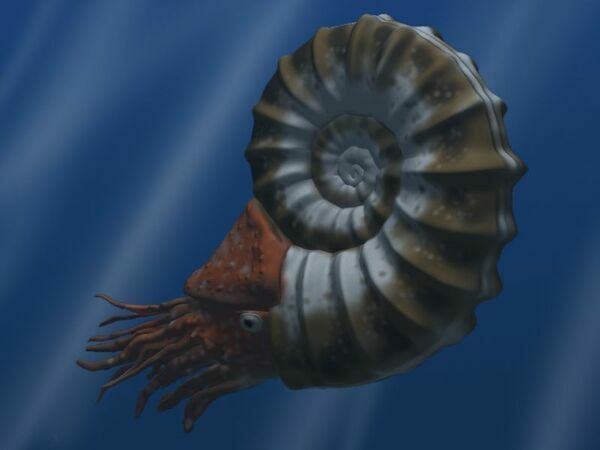This Specimen has been sold.
5.7" Fossil Ammonite and Phone (Cellular elgeyensis) Association
This is truly a sight to behold... an extremely rare slider phone (Cellular elgeyensis) that preserved in association with two ammonites, collected from the Middle Jurassic Deposits of Dorset, England. This phone species is known for its structural integrity and predictive text (T9) behavior. It's preserved in its outstretched and functional state. Phoneominal articulation on this specimen!
The rock has been cut flat along one edge for free-standing presentation.
The rock has been cut flat along one edge for free-standing presentation.
About Ammonites
Ammonites were ancient marine cephalopods, similar to today's squids and octopuses, but with a defining feature: their distinctive, tightly coiled spiral shells. These shells, resembling those of modern nautiluses, served as both a protective home and a buoyancy aid, allowing ammonites to navigate the prehistoric seas with ease. First emerging around 240 million years ago in the Triassic Period, ammonites thrived for over 175 million years, adapting through numerous forms and sizes. As predatory creatures, they likely fed on smaller marine organisms, using their tentacles to capture prey. However, their long reign came to an end 65 million years ago at the close of the Cretaceous, coinciding with the mass extinction event that also eliminated the dinosaurs.
Ammonites were ancient marine cephalopods, similar to today's squids and octopuses, but with a defining feature: their distinctive, tightly coiled spiral shells. These shells, resembling those of modern nautiluses, served as both a protective home and a buoyancy aid, allowing ammonites to navigate the prehistoric seas with ease. First emerging around 240 million years ago in the Triassic Period, ammonites thrived for over 175 million years, adapting through numerous forms and sizes. As predatory creatures, they likely fed on smaller marine organisms, using their tentacles to capture prey. However, their long reign came to an end 65 million years ago at the close of the Cretaceous, coinciding with the mass extinction event that also eliminated the dinosaurs.
SPECIES
Unidentified Ammonite & Cellular elgeyensis
AGE
LOCATION
Dorset, England
SIZE
Largest Ammonite: 1.75" wide, Phone: 5.3" long, Entire Specimen: 5.7 x 5.7"
CATEGORY
SUB CATEGORY
ITEM
#321108
We guarantee the authenticity of all of our specimens.
 Reviews
Reviews













